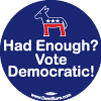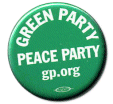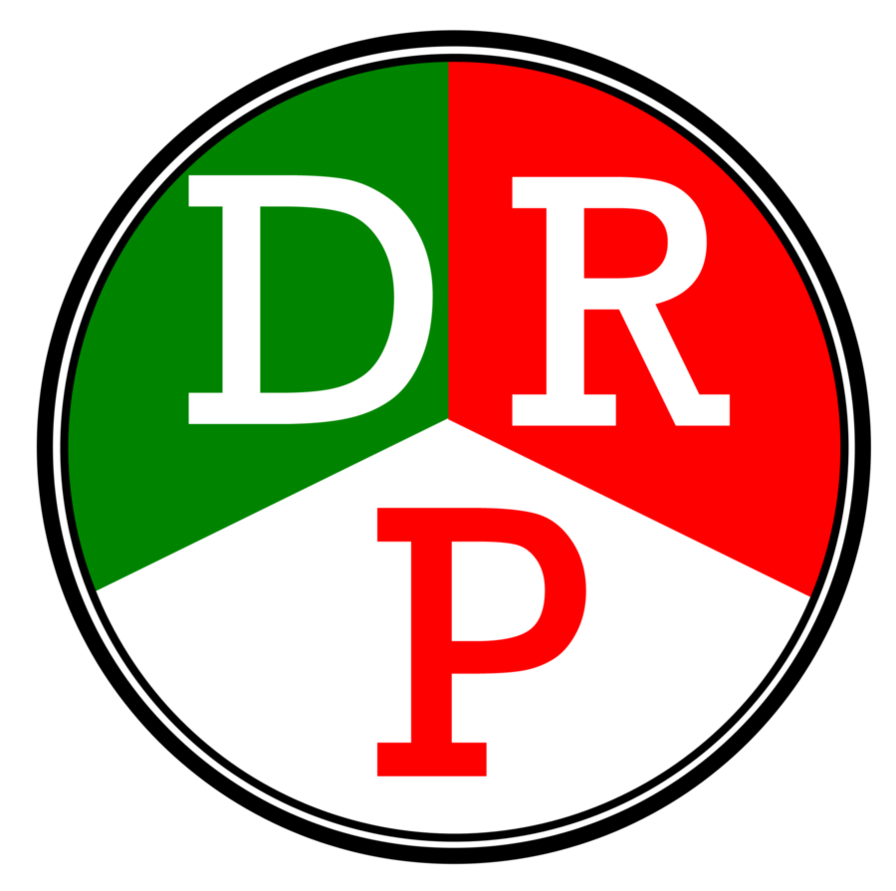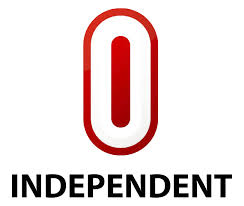Latest News

DEMOCRATIC PARTY (DNC) - The Democrats won the White House in 2008 and 2012, won some key governorships (PA, NY, MO, MN, and CA) -- but lost control of the US House in 2010, and lost the US Senate in 2014. Democrats run the wide gamut from the near Euro-style democratic-socialist left (Barbara Lee, Raul Grijalva and the Congressional Progressive Caucus) and traditional liberals (Barack Obama, Nancy Pelosi, Joe Biden) to the pragmatic "centrist" moderate-to-liberal style (Hillary Clinton, Mark Warner) to the Dem center-right (Harry Reid and the New Democratic Coalition) to the dwindling GOP-style center-conservative right (Joe Manchin, Blue Dog Coalition). Official affiliated national Democratic sites include:
- Democratic Congressional Campaign Committee (DCCC), House Minority Leader Nancy Pelosi, and House Minority Whip Steny Hoyer.
- Democratic Senatorial Campaign Committee (DSCC), Senator Minority Leader Harry Reid, and the Senate Democratic Leadership.
- Democratic Governors Association (DGA).
- Democratic Legislative Campaign Committee.
- Young Democrats of America (YDs).
- College Democrats of America ("College Dems").

REPUBLICAN PARTY (RNC) - Republicans lost control of the Presidency in 2008 and 2012. However, the GOP came on strong in the off-year elections, recapturing control of the US House in 2010 and the US Senate in 2014. The GOP also holds several key Governorships (including TX, OH, FL, GA, MI, IL, WI and NJ). Republicans can generally be classified into several different sub-sets: traditional establishment conservatives (John Boehner, Chris Christie, Paul Ryan, Jeb Bush, and the Club for Growth), the GOP: We're Back!"Religious Right" (Mike Huckabee, Rick Santorum, Mike Pence, and the Family Research Council), libertarians (Rand Paul and the Campaign for Liberty), the "paleo-conservative" wing that backs strict anti-immigration controls (Steve King), and the rapidly dwindling "centrist" or "moderate" wing (Mark Kirk, Larry Hogan and Charlie Baker). The influential "Tea Party" movement -- split between several groups who each claim the name (Tea Party Patriots, Tea Party Express, Tea Party Nation, etc.) -- emerged in 2009 and seem to straddle somewhere between the libertarian and paleo-conservative wings of the GOP, but seemed in decline in the 2014 GOP primaries. Official, affiliated national GOP sites include:
- National Republican Congressional Committee (NRCC), House Speaker John Boehner and the House Republican Conference.
- National Republican Senatorial Committee (NRSC) and Senate Majority Leader Mitch McConnell, and the Senate Republican Conference.
- Republican Governors Association (RGA).
- National Federation of Republican Women (NFRW).
- Young Republican National Federation (YRs).
- College Republican National Committee (CRNC).
- National Teen Age Republicans (TARs).

CONSTITUTION PARTY - Former Nixon Administration official and one-time Conservative Coalition chair Howard Phillips founded the US Taxpayers Party (USTP) in 1992 as a potential vehicle for conservative pundit Pat Buchanan to use for a third party White House run -- had he agreed to bolt from the GOP in 1992 or 1996. The USTP pulled together several of the splintered right-wing third parties -- including the once mighty American Independent Party (below) -- into a larger political entity. The USTP renamed itself the Constitution Howard Phillips (USTP) 1992Party in 1999. The party is strongly pro-life, anti-gun control, anti-tax, anti-immigration, trade protectionist, "anti-New World Order," anti-United Nations, anti-gay rights, anti-welfare, and pro-school prayer. When Buchanan stayed in the GOP, Phillips ran as the USTP nominee in 1992 (ballot status in 21 states - 43,000 votes - 0.04%), 1996 (ballot spots in 39 states - 185,000 votes - 6th place - 0.2%), and 2000 (ballot status in 41 states - 98,000 votes - 6th place - 0.1%). The party started fielding local candidates in 1994, but has fielded disappointingly few local candidates since 1998 (except in a handful of states). The party received a brief boost in the media when conservative US Senator Bob Smith of New Hampshire -- an announced GOP Presidential hopeful -- bolted from the Republican Party to seek the Constitution Party nomination in 2000 (but the erratic Smith quit the Constitution Party race a few weeks later, announced he would serve in the Senate as an Independent, and subsequently rejoined the GOP by the end of 2000). At the 1999 national convention, the party narrowly adopted a controversial change to the platform's preamble which declared "that the foundation of our political position and moving principle of our political activity is our full submission and unshakable faith in our Savior and Redeemer, our Lord Jesus Christ" -- although the party officially invites "all citizens of all faiths" to become active in the party. Any national candidate seeking the party's nomination is explicitly required to tell the convention of any areas of disagreement with the party's platform. The CP's 2004 Presidential nominee, attorney Michael Peroutka, had ballot status in 36 states (144,000 votes - 5th place - 0.1%). Former three-time GOP Presidential candidate Alan Keyes -- a former Ambassador during the Reagan Administration -- bolted to the Constitution Party in 2008, but was defeated for the nomination by fundamentalist pastor Chuck Baldwin (note: which prompted Keyes to immediately create his own rival conservative party). In the 2008 election, Baldwin had ballot status in 37 states and won 196,000 votes (5th place - 0.15%), the CP's best showing to date. In 2012, former GOP Congressman Virgil Goode was the party's Presidential nominee and captured 122,000 votes (5th place - 0.09%).

GREEN PARTY OF THE UNITED STATES - The Green Party -- the informal US-affiliate of the leftist, environmentalist European Greens movement -- is one of the two largest third parties in the nation. The party regularly fields candidates for local, state and federal offices in many states, and has established active state affiliate parties in nearly all 50 states. The Greens scored a major political points when it convinced prominent consumer advocate Ralph Nader to run as their first Presidential nominee in 1996. Spending Vote Green Partyjust over $5,000, Nader was on the ballot in 22 states and carried over 700,000 votes (4th place - 0.8%). In 2000, Nader raised millions of dollars, mobilized leftist activists and grabbed national headlines with his anti-corporate campaign message. Nader ignored pleas from liberal Democrats that he abandon the race because he was siphoning essential votes away from Al Gore's campaign -- answering that Gore was not substantially different than Bush. In the end, Nader was on the ballot in 44 states and finished third with 2,878,000 votes (2.7%). More significantly, Nader missed the important 5% mark for the national vote, meaning the party remained ineligible for federal matching funds. Until 2001, the Greens were largely a collection of fairly autonomous state/local based political entities with only a weak (and sometimes splintered) national leadership structure that largely served to coordinate electoral activities. That faction -- formerly named the Association of State Green Parties (ASGP) -- was the larger and more moderate of the two unrelated Green parties. The ASGP voted in 2001 to convert from an umbrella coordinating organization into a formal, unified national party organization. Nader made another run in 2004 -- but ran as an Independent. Instead, Green Party General Counsel David Cobb of Texas won the Presidential nomination (ballot status in 29 states - 120,000 votes - 6th place - 0.1%). Cobb argued the party needed to nominate a candidate who openly belonged to the party (note: Nader had never joined) and was pledged to building the party at the local level. Cobb ran what was seen as a "safe-states" strategy -- a controversial move whereby Cobb only made major efforts to gain votes in states where a strong Green showing would not compromise the ability of the Democratic nominee to defeat Bush in the state. Democrats appreciated the move, but it weakened Cobb's message. For 2008, the Greens dumped the "safe states" strategy and instead tried to run a more aggressive campaign wherever possible. Former Congresswoman Cynthia McKinney (D-GA) joined the Greens in 2007, moved to California, and easily captured the Green nomination in 2008. McKinney was on the ballot in 32 states and garnered 161,0000 votes (6th place - 0.1%). Physician and progressive activist Jill Stein was the Green Presidential nominee in 2012 and scored the party's best showing since the Nader days, capturing 470,000 votes (4th place - 0.4%). Official Green Party links include: Green Pages (newspaper), Global Green Network, Green Party News Center, Campus Greens, Lavender Green Caucus, National Women's Caucus, and Green Party Election Results. The Green Party Platform sets forth the party's official stances.

DEMOCRATIC REPUBLICAN PARTY (DRP)- The Democratic-Republican Party was the American political party in the 1790s of Thomas Jefferson and James Madison formed in opposition to the centralizing policies of the new Federalist party. It came to power in 1800, and dominated national and state affairs until the 1820s, when it faded away. That party Colours is Green.
The term "Democratic-Republican" is used especially by modern political scientists for the first "Republican Party" (as it called itself at the time), also known as the Jeffersonian Republicans. Historians typically use the title "Republican Party". It was the second political party in the United States, and was organized by then Thomas Jefferson and his friend James Madison in 1791-93, to oppose the Federalist Party run by Secretary of the Treasury Alexander Hamilton. The new party controlled the presidency and Congress, and most states, from 1801 to 1825, during the First Party System. Starting about 1791 one faction in Congress, many of whom had been opposed to the new Constitution, began calling themselves Republicans in the Second United States Congress. It splintered in 1824 into the Jacksonian movement (which became The Democratic Party in the 1830s) and the short-lived National Republican Party (later succeeded by the Whig Party).

Independent- An independent or nonpartisan politician is an individual politician not affiliated to any political party. There are numerous reasons why someone may stand for office as an independent.
Independents may hold a centrist viewpoint between those of major political parties.
Other independent politicians may be associated with a political party, be former members of it, or have views that align with it, but choose not to stand under its label. Others may belong to or support a political party but believe they should not formally represent it and thus be subject to its policies.
In some countries (for example, Kuwait), political parties are illegal and all candidates effectively stand as independents.[1]
In running for public office, independents sometimes choose to form an alliance rather than a party, and formally register their "independents" group. Some other independent candidates choose to aggregate themselves as a political party.
 Home
Home



